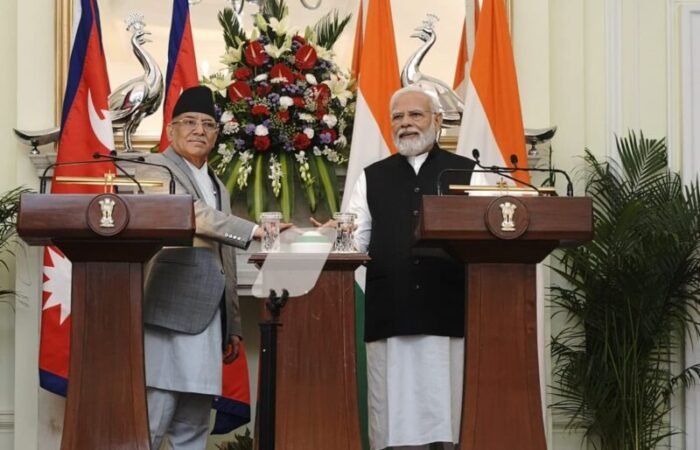Unleashing the Power of Connectivity: India-Nepal’s HIT Approach

During a press statement with Nepal Prime Minister Pushpa Kamal Dahal “Prachanda” at Hyderabad House, Prime Minister Narendra Modi reflected on the progress made in India-Nepal relations and emphasized the importance of connectivity. Recalling his ‘HIT’ formula (Highways, I-ways, and Trans-ways) proposed for India-Nepal relations nine years ago, PM Modi expressed his satisfaction with the new connectivity links established between the two countries and highlighted the decisions taken to enhance the bilateral partnership.
PM Modi stated that transit agreements were signed, and new rail links were established to improve physical connectivity. Additionally, a long-term power trade agreement was reached, strengthening the power sector of both nations. Recognizing the deep-rooted religious and cultural ties between India and Nepal, PM Modi announced the expedited implementation of projects related to the Ramayana Circuit to further enhance these connections.
To signify the progress, both prime ministers unveiled the e-plaque of the Kurtha-Bijalpura section of the Railway and jointly inaugurated an Indian Railway cargo train from Bathnaha to the Nepal Custom yard. PM Modi expressed his commitment to resolving all issues, including boundary disputes, with the spirit of cooperation, aiming to elevate the relationship between the two countries to new heights.
Prime Minister Prachanda’s visit marked his first bilateral trip abroad since assuming office in December 2022, and he was accompanied by a high-level delegation. India’s development assistance to Nepal has focused on grassroots infrastructure development, including projects related to infrastructure, health, water resources, education, and rural and community development. Notably, India has supported the construction of integrated checkposts in Birgunj and Biratnagar in Nepal and has built several hydroelectric projects, such as Pokhara, Trisuli, Western Gandak, and Devighat, through agreements with Nepal Electricity Authority (NEA) and Satluj Jal Vidyut Nigam (SJVN) Ltd.
Cooperation in the power sector has been robust, with recent completion of three cross-border transmission lines with assistance from the Government of India: the 400 kV Muzaffarpur-Dhalkebar line (2016) and the 132 kV Kataiya-Kusaha and Raxaul-Parwanipur lines (2017). These efforts aim to enhance power supply not only for Nepal and India but also for Bangladesh. Furthermore, Nepal has extended an invitation to Indian businesses to invest in the West Seti Hydropower Project, fostering economic collaboration between the two nations.


















